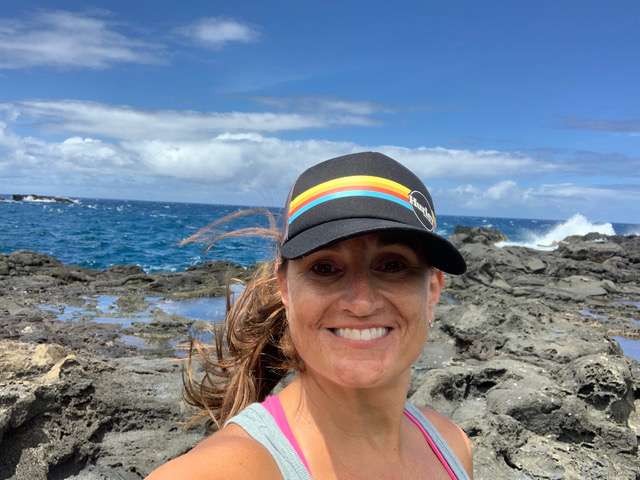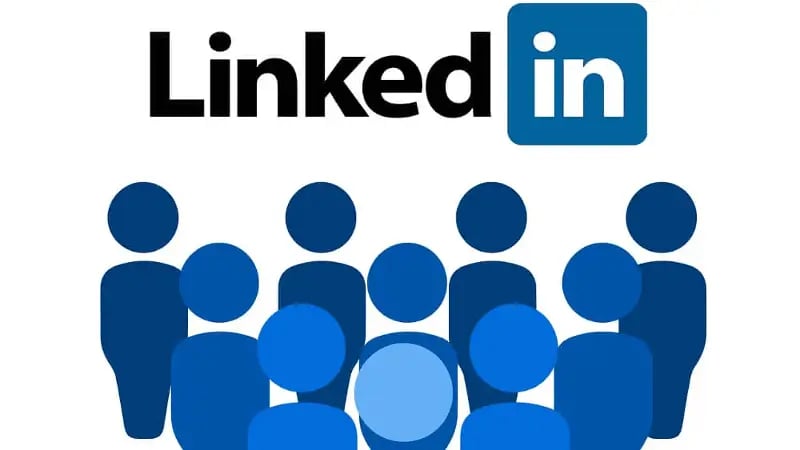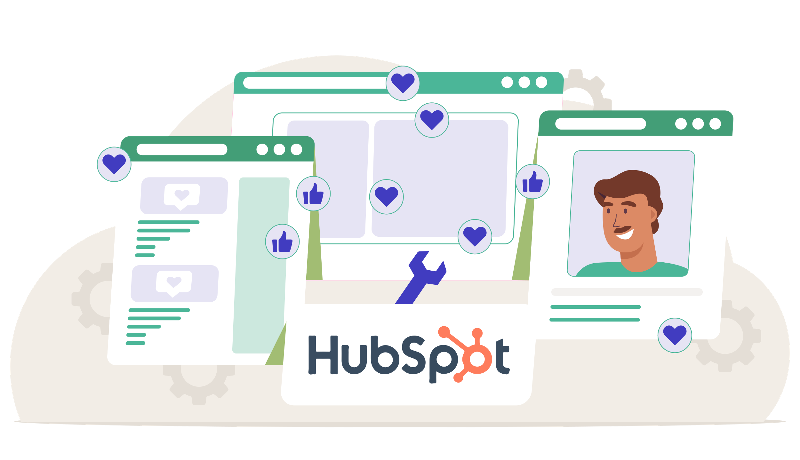Nutzen Sie HubSpot Marketing Hub für Social-Media-Marketing? Automatisieren Sie Multi-Channel-Postings und nutzen Sie KI, um das Engagement zu maximieren.
Anleitung für Anfänger im LinkedIn Marketing
LinkedIn hat Millionen von Nutzern und ist eine leistungsstarke Ressource für Unternehmen auf der ganzen Welt, und viele Organisationen nutzen die Plattform für Marketing und Markenbekanntheit. Wenn Sie jedoch das Potenzial von LinkedIn nicht voll ausschöpfen, kann dies zu verpassten Wachstumschancen führen.
Dieser Artikel soll als Leitfaden für das LinkedIn-Marketing dienen und bietet Tipps und Ressourcen, die Ihrem neuen Unternehmen helfen, auf der Plattform wahrgenommen zu werden und zu gedeihen.
Persönliche LinkedIn-Profile vs. Unternehmensseiten
Im heutigen digitalen Zeitalter wird es für Berufstätige immer wichtiger, ein persönliches Profil auf LinkedIn zu unterhalten. Mehr als 660 Millionen Berufstätige weltweit haben ein Profil auf LinkedIn, um sich mit Kollegen und Branchenkollegen auszutauschen, ihr Netzwerk zu erweitern und neue Geschäftsmöglichkeiten zu entdecken. Da 80 % der B2B-Leads, die über soziale Medien generiert werden, von LinkedIn stammen, kann eine Unternehmensseite auf LinkedIn für Unternehmen unglaublich vorteilhaft sein: Organisationen können ihre Zielgruppe identifizieren und ansprechen, persönliche Kontakte knüpfen und die Markenbekanntheit steigern.
Auch wenn es den Anschein haben mag, dass ein Profil ausreicht, dienen die beiden Profile doch sehr unterschiedlichen Zwecken. Für neue und wachsende Unternehmen, die ihr Marketing auf LinkedIn maximieren möchten, ist ein persönliches Profil und eine Unternehmensseite von großem Vorteil.
Warum also beide?
Persönliche Profile
-
Solide persönliche Profile verleihen den zugehörigen Marken Glaubwürdigkeit.
-
LinkedIn Pro-Mitglieder können sich auf eine Weise vernetzen, wie es eine Unternehmensseite nicht kann.
-
LinkedIn Business-Seiten erfordern ein aktives persönliches Profil als Seitenmanager.
Unternehmensprofile
-
LinkedIn-Nutzer können Geschäftsseiten einfach folgen, ohne auf die Genehmigung zu warten. Je einfacher die Nutzer mit Ihrem Unternehmen interagieren können, desto wahrscheinlicher ist es, dass sie dies auch tun.
-
Nur LinkedIn-Geschäftsseiten können Anzeigen schalten.
-
Geschäftsseiten ermöglichen es Ihnen, geschäftliche Dienstleistungen und nicht individuelle Fähigkeiten zu bewerben.
-
Nutzer - auch Sie und Ihre Mitarbeiter - können Beiträge des Unternehmens problemlos mit ihren Kontakten teilen und so die Vertriebsmöglichkeiten erhöhen.
-
Eine Unternehmensseite verleiht der Marke eine Stimme, die über die Persönlichkeit des Einzelnen hinausgeht.
Eine mögliche Ausnahme von beiden Konten ist, wenn Sie sich selbst (und nicht eine Marke) als Ihr Unternehmen bewerben. In diesem Fall kann ein persönliches Profil allein ausreichen.
Jetzt, da wir Sie davon überzeugt haben, zusätzlich zu Ihrem Profil eine Unternehmensseite zu erstellen, ist es an der Zeit, mit dem Aufbau zu beginnen.
Erstellen Sie ein ansprechendes, fehlerfreies Profil
Oft ist die erste Interaktion, die ein potenzieller Kunde mit Ihrem Unternehmen hat, Ihre Unternehmensseite auf LinkedIn. Daher ist es wichtig, von Anfang an einen guten Eindruck zu hinterlassen und Glaubwürdigkeit zu vermitteln. Die Nutzer werden schnell das Interesse verlieren, wenn Ihre Seite unprofessionell aussieht, mit Tippfehlern gespickt ist oder mit ablenkenden Grafiken überladen ist. Es ist zwar wichtig, professionell zu wirken, aber es ist auch hilfreich, etwas von der Kultur und der Persönlichkeit Ihres Unternehmens auf Ihrer Seite zu zeigen, um Ihr Unternehmen menschlich zu machen.
Keine Sorge, wir haben einige bewährte Verfahren zusammengestellt, mit denen Sie Ihre Unternehmensseite mit der perfekten Mischung aus Glaubwürdigkeit und Kreativität gestalten können.
Tun:
-
Passen Sie Ihr Titelfoto an und formatieren Sie es richtig
-
Fügen Sie ein kundenorientiertes Elevator Pitch über Ihr Unternehmen ein
-
Nutzen Sie die Gesamtzahl Ihrer Zeichen, um Ihre Geschichte zu erzählen - und verwenden Sie relevante Schlüsselwörter
-
Fügen Sie der Seite Inhalte mit Mehrwert hinzu (Videos, Berichte, White Paper usw.)
-
Ermutigen Sie Ihre Teammitglieder, Ihre Seite zu mögen und ihr zu folgen und Inhalte zu teilen, wenn sie relevant sind.
-
Behalten Sie eine bestimmte Markenästhetik bei und verwenden Sie eine einheitliche Sprache
-
Zeigen Sie etwas Persönlichkeit, wobei Sie nicht vergessen dürfen, dass es sich um ein professionelles Konto handelt.
Unterlassen Sie es:
-
Hinterlassen Sie keine Tipp- oder Rechtschreibfehler auf Ihrer Seite
-
Posten Sie keine irrelevanten oder fehlerhaften Inhalte auf Ihrer Seite
-
Erlauben Sie Ihrem Profil, zu stagnieren - halten Sie Ihr Publikum bei der Stange!
-
Fehlerhafte oder kaputte Links posten
-
Spammen Sie Ihre Verbindungen
-
Konzentrieren Sie sich nur auf die Eigenwerbung - beschäftigen Sie sich mit Ihrem Publikum, verkaufen Sie es nicht nur.
Es gibt zahlreiche Tools und Hilfsmittel, die Ihnen bei den oben genannten Aufgaben helfen können:
-
Grammarly (ein kostenloses Tool zur Überprüfung von Rechtschreibung und Grammatik)
-
Canva (ein kostenloses oder kostenpflichtiges Tool für Grafiken)
Auch interessant?
Die Kunst des Postings auf LinkedIn
Zu wissen, wann und was auf LinkedIn zu posten ist, kann eine Herausforderung sein, aber der Prozess ist einfach, wenn Sie ein Muster entwickelt haben. Es gibt jedoch eine gewisse Wissenschaft, wenn es darum geht, ansprechende Inhalte zu erstellen und Ihr Publikum zum richtigen Zeitpunkt zu erreichen. Es ist wichtig zu beachten, dass das, was für ein Unternehmen funktioniert, nicht unbedingt für ein anderes gilt, aber diese Best Practices sind ein ausgezeichneter Ausgangspunkt.
Wann soll gepostet werden?
-
Wochentags (Dienstag - Donnerstag)
-
8:00 - 14:00 Uhr (in der von Ihnen gewünschten Zeitzone)
-
Vermeiden Sie Beiträge am Wochenende oder außerhalb der Geschäftszeiten (8:00 - 17:00 Uhr)
Wie bei jeder anderen Social-Media-Plattform auch, ist das Timing entscheidend. Wenn Sie außerhalb der Geschäftszeiten posten, kann Ihr Inhalt in der Masse der anderen Beiträge untergehen, daher ist es wichtig, bei der Kommunikation mit Ihrem Publikum aufmerksam zu sein.Berücksichtigen Sie dabeidie Zeitpläne Ihrer Zielgruppe, nicht Ihre eigenen. So kann es sein, dass Ihr Zielpublikum Wochenendpläne hat, in der Mittagspause häufiger in den sozialen Medien unterwegs ist oder LinkedIn ignoriert, wenn es nicht im Büro ist.
Glücklicherweise gibt es zahlreiche Online-Ressourcen, die Ihnen dabei helfen, den richtigen Zeitplan für Ihre Kunden zu finden. Ziehen Sie bei Ihrer Recherche in Betracht, sich von branchenführenden Anbietern wie HubSpot beraten zu lassen, da diese über einen breiteren Kundenstamm verfügen und somit eine umfassendere Datenerhebung haben.
Sie können auch ein Planungstool (z. B. Hootsuite, Sprout oder Buffer) verwenden, um Empfehlungen für die besten Posting-Zeiten für eine höhere Beteiligung zu erhalten. Mit diesen Tools können Sie auch Beiträge im Voraus entwerfen und sie für künftige Daten und Zeiten planen.
Oder Sie beauftragen eine Agentur mit der Erstellung ansprechender Inhalte, dem Testen spezifischer Nachrichten, der Verfolgung des Engagements und der Optimierung Ihrer Kampagnen.
Wie oft Sie auf LinkedIn posten sollten
Es ist wichtig zu wissen, wann und wie oft Sie posten sollten. Wenn Sie Ihre Kontakte mit Beiträgen überhäufen, kann (und sollte) dies dazu führen, dass sie Ihre Seite nicht mehr folgen. Wenn Sie jedoch nicht oft genug posten, könnte Ihre Seite stagnieren und Ihre Kontakte das Interesse verlieren. Es gibt ein Gleichgewicht, das es ermöglicht, immer auf dem Laufenden zu bleiben, ohne Ihr Publikum zu überfordern, daher ist es hilfreich, sich an diese Richtlinien zu halten:
-
Maximal ein- bis zweimal pro Tag posten
-
Posten Sie nicht weniger als einmal pro Woche
Ein vorhersehbares Postingmuster kann Ihnen helfen, Ihre Follower zu halten und zu binden.
Was Sie auf LinkedIn posten sollten
Was Sie auf LinkedIn posten sollten, hängt von Ihrem Unternehmen und Ihrer Zielgruppe ab, aber es gibt einige Standardverfahren, die allgemein angewendet werden können. Wir empfehlen die Entwicklung einer im Voraus geplanten Content-Strategie mit geteilten, grafischen, originellen Markeninhalten im Kalender. Beispiele für Inhalte, die Sie planen können, sind:
-
Nationale Feiertage
-
Branchenveranstaltungen (Konferenzen, Tagungen)
-
Tage der Anerkennung (wie der Tag der Lehrer und der Tag der Krankenschwestern)
-
Wohltätigkeit und Gemeinschaft (teilen Sie deren Veranstaltungen, Ihre Teilnahme)
-
Online-Trends (neue oder altbewährte wie #TBT)
-
Wichtige Unternehmensdaten (Jahrestage, Premieren)
-
Schaffen Sie einen Trend (wie "Make-up Monday" oder etwas, das zu Ihrer Marke passt)
Ein vorhersehbares Veröffentlichungsmuster kann Ihnen helfen, Ihre Follower zu halten und zu binden. Sie können auch den neuesten Trends folgen, um die Häufigkeit der Beiträge zu erhöhen.
Es ist auch wichtig, daran zu denken, dass Qualität vor Quantität bei den Inhalten entscheidend ist. Die Inhalte, die Sie posten, sollten ansprechend sein, zum Nachdenken anregen und Ihrem Publikum einen Mehrwert bieten. Insgesamt ist das Wichtigste bei der Veröffentlichung von Inhalten für Ihre Marke, dass Sie etwas Sinnvolles zu sagen haben. Wenn Ihr Unternehmen nicht über eigene Inhaltsersteller verfügt oder Schwierigkeiten hat, gute Inhalte zu finden, kann es hilfreich sein, sich an Experten zu wenden.
Wir freuen uns darauf, Ihr Unternehmen auf LinkedIn zu sehen - viel Spaß beim Posten. Für weitere Tipps und Tricks,
Dieser Beitrag ist auch verfügbar in:
- Englisch: Beginner's Guide to LinkedIn Marketing
- Spanisch: Guía para principiantes sobre marketing en LinkedIn
- Französisch: Guide du marketing sur LinkedIn pour les débutants
- Italienisch: Guida per principianti al marketing su LinkedIn
- Rumänisch: Ghidul începătorului pentru marketingul pe LinkedIn
- Chinesisch: LinkedIn 营销新手指南










Hinterlasse einen Kommentar